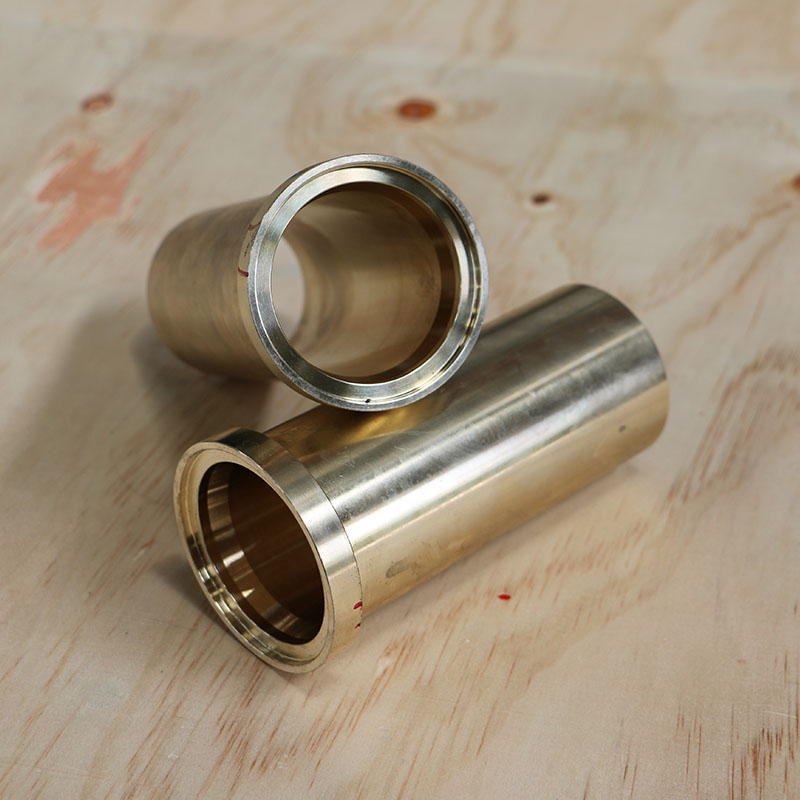In recent years, tin bronze bushings have received a lot of attention in mechanical engineering and industrial applications, and their excellent workability and reliability make them ideal for a variety of application scenarios. As a traditional bronze alloy, tin bronze bushing occupies an important position in the market with its unique performance characteristics and stable quality.
Tin bronze bushings are mainly composed of copper and tin, with tin content usually between 5% and 12%. One of its distinguishing features is its excellent casting properties, which allow tin bronze bushings to be precisely manufactured into a variety of shapes and sizes. Good casting performance not only reduces the production cost, but also improves the consistency and quality stability of the parts. This makes tin bronze bushings excellent in applications that require complex shapes or precise dimensions.
Excellent processability:
In addition, the processability of tin bronze bushings are also excellent. Its relatively low hardness and good cutting properties make the machining process more efficient. The processing of this alloy usually includes milling, turning and drilling, so that tin bronze bushings can be easily adapted to different design and production requirements. Due to the relatively simple processing process of tin bronze bushing, manufacturers can respond quickly to market demand and produce high-quality bronze bushing parts in a short time.

Excellent reliability:
The reliability of the tin bronze bushing has also been widely recognized. The material has good corrosion resistance and wear resistance, making it stable in various industrial environments. Although the wear resistance of tin bronze bushing is not as good as that of some high-end bronze alloys (such as aluminum bronze), its reliability is excellent in medium load and standard applications. Especially in applications where extreme wear resistance is not required, tin bronze bushings work stably for a long time, reducing the frequency of maintenance and replacement, thereby reducing overall operating costs.
In practical applications, tin bronze bushings are widely used in the manufacture of various mechanical components, such as plain bearings, gears and connecting rods. These components usually need to have good processability and reliability to ensure smooth operation and long-term stability of the equipment. With its excellent properties, tin bronze bushings are ideal for these applications.
In general, the tin bronze bushing has won the favor of the market for its excellent processability and reliability. Although it may not be as good as other bronze alloys under certain extreme conditions, its performance in standard industrial applications undoubtedly proves its value. For applications that require efficient manufacturing and stable performance, tin bronze bushings are a worthy choice.
| Previous:Flaw detection of bronze bushing | Next:Maintenance Guide: How to extend the service life and performance of bronze bushings |




 Copyright © 2022
Copyright © 2022